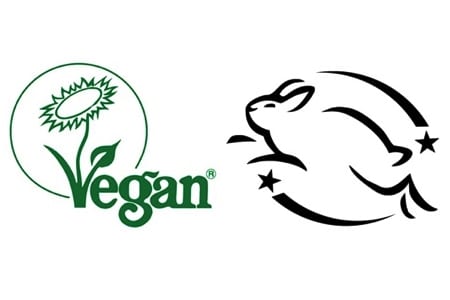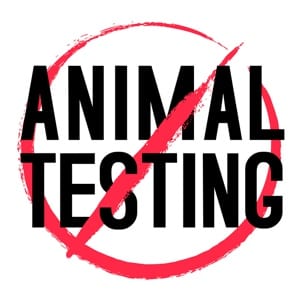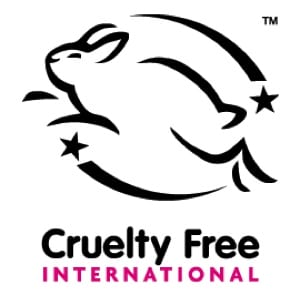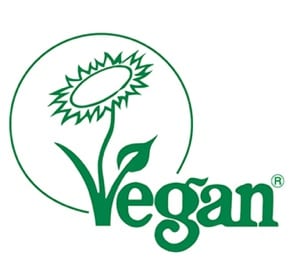 There has been a growing demand for vegan-friendly food and other products for years now, but there is also a greater desire to buy products that are labelled as “cruelty free”. The terms are sometimes used interchangeably, but in this article, we will explain the difference between products labelled “vegan” and those marked “cruelty free” and why something can be one without necessarily being the other.
There has been a growing demand for vegan-friendly food and other products for years now, but there is also a greater desire to buy products that are labelled as “cruelty free”. The terms are sometimes used interchangeably, but in this article, we will explain the difference between products labelled “vegan” and those marked “cruelty free” and why something can be one without necessarily being the other.
Note that while cruelty-free products can be more or less anything, there is particular attention given to the cosmetics industry and household products due to their historically poor record in relation to animal testing.
Basic Definition of “Vegan” & “Cruelty Free” Products
Before we go into more detail about the two terms in question, let us first give a basic definition of products that fall under each of these terms:
- Vegan – Products that do not contain animal-derived products or use them in the production process
- Cruelty Free – Products that have not been tested on animals or use ingredients that have been
Note that these are massive over-simplifications as definitions, and many people would argue that the definition of a vegan product goes well beyond simply ‘not containing animal products’. But in terms of consumer products – whether foodstuffs, cosmetics, cleaning products, clothing or anything else – these loose definitions tend to dictate whether something qualifies to be labelled vegan and/or cruelty free.
As we shall see, however, they can often be overly simplistic and might well cause confusion amongst vegans or those seeking products that have not been tested on animals.
Can Vegan Products Be Tested on Animals?

In short, yes. Many products that are labelled as vegan have indeed been tested on animals. As you see will below though, products that have been certified as vegan by the Vegan Society, should not have been tested on animals. The problem arises when companies decide to self-certify their products as vegan based on the fact that they have used no animal-derived ingredients.
In such an instance the manufacturer in question is not embracing the full ethos of veganism and merely focussing on the narrow, somewhat flawed definition of a product being vegan just because it contains no animal-based ingredients. Such products might also have used some animal-derived products in their manufacturing processes, though many companies who have done so will not explicitly state their end product is vegan.
Does Cruelty Free Mean Vegan?
Products that explicitly state they are cruelty free and that neither the end product nor the ingredients have been test on animals might not be vegan. This could be because they could contain something like honey or beeswax for instance, or any number of other animal-derived products that for whatever reason are not deemed to be cruel.
Whilst honey, for example, isn’t a part of an animal, it is still the case that acquiring honey or wax from bees is a form of exploitation of animals, as we explore in detail in our Is Honey Vegan? article. So, while the product might not have been tested on animals, many people would view it as misleading to suggest it is cruelty free on the basis that the exploitation of bees in order to get their honey or wax is inherently cruel to animals.
Beauty Products & Cosmetics
There are many cosmetics and beauty treatment brands that realise that testing their products on animals (and being exposed as having done so) really isn’t a good look. As such, many have embraced the cruelty-free movement, and though a cynic might suggest such decisions have been based on profit margins rather than ethics, most people would agree, the fewer animals that are subjected to cosmetics testing, the better.
The problem is, there are plenty of ingredients used in cosmetics that derive from animals that would render the end product non-vegan even if it hasn’t been tested on animals. We go into more detail about the main culprits in our Makeup & Cosmetics article, but here are the main ones:
| Ingredients Derived from Animals | Uses |
|---|---|
| Beeswax | Used in moisturisers, creams, lip balms and more as a skin softening agent or aroma enhancer. |
| Lanolin | Oil from the wool of sheep, lanolin is an ingredient in various creams and beauty potions. |
| Carmine | Used to colour lipstick among other things, carmine comes from the cochineal… an insect! |
| Albumen | Derived from eggs, albumen helps certain cosmetics coagulate in the required fashion. |
| Shellac | Another ingredient derived from insects, shellac is used in some nail varnishes. |
If you see a product marked as cruelty free, it does not follow that it is automatically vegan too, so always check the ingredients.
How Do You Know If Something Is Vegan or Cruelty Free or Both?
Some things are obviously vegan, like carrots or seaweed or apples or hazelnuts. There are lots of other things, whether more processed foods like marmite or nutritional yeast, or certain brands of cosmetics, types of clothing (e.g. cotton) or other products that are also vegan and that those following a vegan lifestyle learn are vegan through experience or from the various information that is available (such as the Is It Vegan? section of our site).
But when it comes to cruelty-free products, there are not many items where it is obvious the product in question has not been tested on animals. This is where certification comes in.
Often manufacturers of products will simply self-certify by writing something like ‘suitable for vegans’ or ‘not tested on animals’ on the packaging. This is good enough for most people looking to eliminate products containing animal ingredients or which have been tested on animals. For others though, further reassurance is sought. Thankfully, there are various organisations that offer certification of goods of all sorts to show they are vegan-friendly or cruelty free.
Cruelty Free Certification
 When it comes to certification of products that are deemed to be cruelty free, the most commonly recognised accreditation is the Leaping Bunny Program. The scheme came about through the joining of minds of eight animal protection groups in 1996 as a way to promote awareness among consumers about which products really were cruelty free.
When it comes to certification of products that are deemed to be cruelty free, the most commonly recognised accreditation is the Leaping Bunny Program. The scheme came about through the joining of minds of eight animal protection groups in 1996 as a way to promote awareness among consumers about which products really were cruelty free.
In order for a product to qualify for the Leaping Bunny mark the company producing it must not “conduct, commission, or be a part to animal testing” including for formulations or ingredients of such products. There are various other boxes that must be ticked as well (which can be read on the Leaping Bunny site). Note that the Leaping Bunny scheme focusses on animal testing and not on whether or not the ingredients are derived from animals.
This might seem counterintuitive for many vegans as clearly including an animal product that necessarily required that animal to be killed, or at least exploited, would surely qualify as being “cruel”. But this is the focus they have chosen, so a Leaping Bunny product is not necessarily also vegan. Note that Peta and other organisations also offer cruelty-free certification for products that fit their specific criteria.
Vegan Certification

In the UK, it is possible for products to apply for the Vegan Trademark with the Vegan Society. Also referred to as the “sunflower symbol”, in order to qualify to use the Vegan Trademark a product must not:
- Contain animal products
- Have used animal products in the manufacture or processing of the end product
- Contain genetically modified organisms (GMO) that have involved animal genes or substances that have derived from animals
- Have been prepared in the same place as non-vegan products
- Have tested either the final product or its ingredients on animals
Note that products that qualify for the Vegan Trademark should “have never been tested on animals on behalf of the manufacturer”, the key part being “on behalf of the manufacturer”. Almost any processed item used in any product anywhere has at some point or other been tested in some way on animals. But if it has not been carried out at the specific behest of the manufacturer of the product or its ingredients, a product does not fall out of contention to be classified as vegan in this case.
The Vegan Society is the main provider of vegan certification for products in the UK, but there are other organisations, such as vegan.org, the Vegetarian Society, the Vegan Organic Network and others that also offer certification of vegan-friendly products.
Vegan Vs Cruelty Free in Summation
Unless a particular product is clearly marked as both vegan and cruelty free, you cannot be sure it definitely ticks both boxes.
Look for the Vegan Society Sunflower
Moreover, most vegans (those who don’t just classify themselves as dietary vegans) would suggest that a product that is tested on animals cannot be classified as vegan, even if it doesn’t contain any animal products.
Therefore, in order to be sure a product is both vegan and cruelty free, looking out for the sunflower mark (the certification offered by the Vegan Society) can be a good idea as this is aimed at products that are vegan in the most ethically robust version of the term, that is it requires that products (or their ingredients) have not been tested on animals, as well as the other more obvious criteria.
Do Your Own Research
Of course there are plenty of products out there that don’t carry the Vegan Trademark but which state themselves to be vegan and/or cruelty free on their packaging. In that case, the best course of action is to take a note of the product before you buy it and do some research on the company that makes it and their practices.
The customer relations department of such companies are usually willing to explain their processes and procedures in relation to their vegan and cruelty free credentials and, if they’re not, just pick a different product.
When it comes to items carrying the Leaping Bunny mark, many of them might well be vegan, but not necessarily. As such, it is a case of checking the ingredients, researching the company and specifics of the product, and learning which products tick both vegan and cruelty free boxes.